How the EU Digital Markets Act is changing Local Search on Google
The European Union's Digital Markets Act (DMA) is a law introduced to promote fair and open competition in the digital sector. It's targeted specifically at 6 of the biggest tech companies, which it titles as "gatekeepers".
The law was accepted in the European Parliament in 2022, with most of the measures taking effect in March of this year. Retailers will start to see some changes in how their businesses and products are surfaced in Google searches, which we’ve set out below.
Ranking in search
Google's comparison shopping services have long been of interest to the European Commission, first serving Google with a billion-Euro fine in 2017. The DMA again targets Google's "intermediation" services that are part of their search offering, requiring broadly that alternative publishers are given the same chance of appearing at the top of searches.
This means that, in the EU, you're a lot less likely to see the classic Local 3-Pack or the carousel with product listings appear at the top of the page.
For business listing search terms, like "supermarket", this might mean you see a section called "Places sites" at the top of the page, with alternative business directory website results:
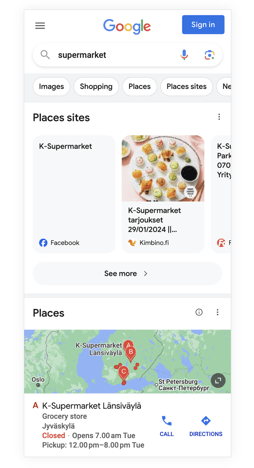
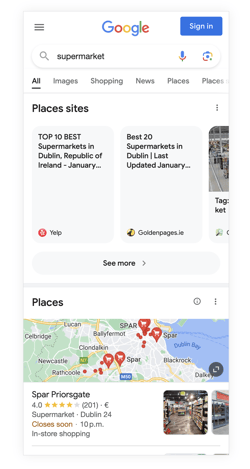
The same is true for organic product listings. The familiar products carousel at the top of the page for product and category searches doesn't appear as frequently anymore, often replaced by one or more product carousels further down in the search results after up to 3 website results.
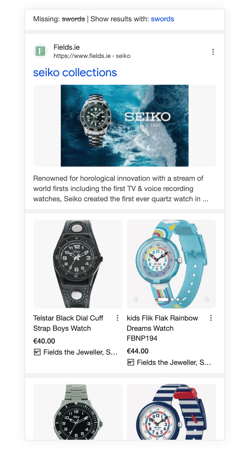
These carousels might display as horizontally scrollable sections, or groups of two products each. Tapping or clicking on one of these products opens a new panel that shows product details and a list of retailers selling this product online or locally.
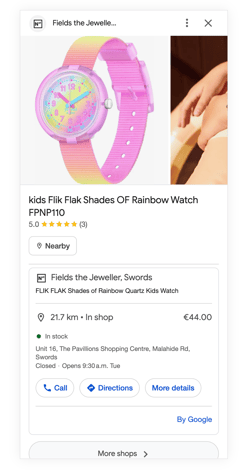
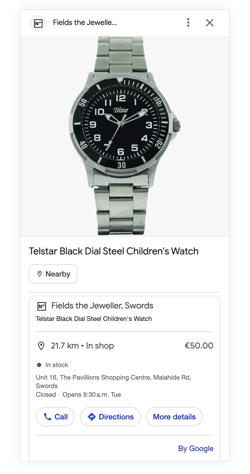
See What's In Store
The 'See What's In Store' section in the Google Business Profile of a retailer with real-time local inventory enabled is still visible. However, it is now often displayed lower on the search results page. The business information that previously used to be in tabs at the top of the page is now spread out over sections in-between other results from the web.
Clicking on the categories in the ‘See What’s In Store’ widget no longer leads to a Google Hosted Local Storefront, but instead shows a new search results page. This page includes products in that category stocked by the retailer, in addition to similar products from other retailers and results from across the web.
The widget also no longer features a search bar, limited to only a list of common product categories sold by the store:
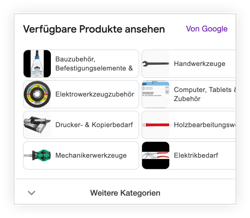
Effects on performance
So far, we've not seen any changes in terms of what these changes means for the performance of either Local Product Listings or Local Inventory Ads.
The number of product impressions for EU retailers seem to follow the post-holiday dip we see globally, but EU retailers seem to be slightly outperforming retailers in other countries in terms of click-through rate since the changes were introduced.
We'll continue monitoring the performance of our EU stores, and will share any other trends we spot across our network.
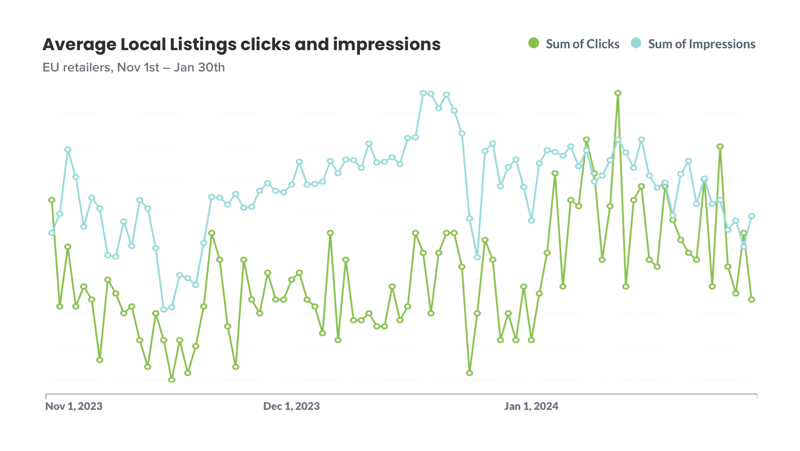
It's important to note that Google only rolled out these changes in the last few weeks, and we're expecting several more smaller changes to be rolled out as the DMA legislation goes into full effect in March and the EU Commission evaluates the compliance of Google and the other involved platforms.
Conclusion
These adjustments change some of the default local shopping journeys we power for our EU retailers on Google. However, it also brings an opportunity to show current and prospective clients a wider array of common shopping journeys happening every day that lead from a click to an in-store purchase.
Overall, for shoppers in the EU, not much changes: they can still find the products sold by your physical retail locations near them.